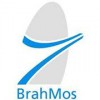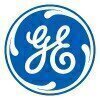Filter interviews by
BrahMos Aerospace Electroplating Operator Interview Questions, Process, and Tips
BrahMos Aerospace Electroplating Operator Interview Experiences
1 interview found
I applied via Approached by Company and was interviewed in Oct 2021. There were 2 interview rounds.

(6 Questions)
- Q1. What is electroplating
- Ans.
Electroplating is a process of depositing a layer of metal onto a surface using an electric current.
Electroplating involves immersing the object to be plated (called the substrate) into a solution containing metal ions.
A direct current is then passed through the solution, causing the metal ions to be attracted to the substrate and form a metal coating.
The metal coating can provide various benefits such as improved appe...
- Q2. Advantages on plating
- Ans.
Plating provides corrosion resistance, improved appearance, and increased durability to metal surfaces.
Corrosion resistance: Plating creates a barrier between the metal surface and the environment, preventing corrosion and rusting.
Improved appearance: Plating can enhance the appearance of metal surfaces by adding a layer of shine or color.
Increased durability: Plating can increase the hardness and wear resistance of me...
- Q3. To prevent discoloration Corrosion resistance Conductivity Wear resistance Decorative purposes
- Ans.
Electroplating is used to prevent discoloration, increase corrosion resistance, improve conductivity, enhance wear resistance, and for decorative purposes.
Electroplating is a process of coating a metal object with a thin layer of another metal using electrolysis.
To prevent discoloration, electroplating is used to add a protective layer to the metal object.
Electroplating can also increase the corrosion resistance of the...
- Q4. Procedures of anodizing
- Ans.
Anodizing is an electrochemical process that forms a protective oxide layer on the surface of a metal.
Anodizing involves immersing the metal in an electrolyte solution and applying an electric current.
The metal acts as the anode and a cathode is also present in the solution.
The electric current causes oxygen ions to combine with the metal atoms, forming a layer of metal oxide on the surface.
The thickness and properties...
- Q5. How many types of anodizing
- Ans.
There are several types of anodizing processes used in electroplating.
The most common types of anodizing are sulfuric acid anodizing, chromic acid anodizing, and hardcoat anodizing.
Sulfuric acid anodizing is the most widely used method and provides a corrosion-resistant coating.
Chromic acid anodizing is used for aluminum alloys that require a thin, non-conductive coating.
Hardcoat anodizing, also known as Type III anodi...
- Q6. Types of inspection in plating
- Ans.
Types of inspection in plating include visual inspection, thickness measurement, adhesion testing, and corrosion resistance testing.
Visual inspection involves examining the plated surface for defects such as pits, cracks, or uneven coating.
Thickness measurement is done using techniques like X-ray fluorescence or eddy current testing to ensure the plating meets specified thickness requirements.
Adhesion testing assesses ...
Interview Preparation Tips
Top trending discussions






Interview questions from similar companies

I applied via Naukri.com and was interviewed in Dec 2021. There were 3 interview rounds.
Interview Questionnaire
4 Questions
- Q1. Which current use for electroplating?
- Ans.
Electroplating is used in various industries such as automotive, electronics, jewelry, and aerospace.
Automotive industry uses electroplating for chrome plating of car parts.
Electronics industry uses electroplating for coating circuit boards with a layer of metal.
Jewelry industry uses electroplating to enhance the appearance of jewelry pieces.
Aerospace industry uses electroplating for corrosion resistance and to improve
- Q2. Which anodes use for nickele plating?
- Ans.
The anodes commonly used for nickel plating are nickel anodes and insoluble anodes.
Nickel anodes are made of pure nickel and are used for general nickel plating applications.
Insoluble anodes, such as platinum or graphite, are used for high-speed or high-current plating processes.
Other anodes like lead, tin, or stainless steel can also be used depending on specific requirements.
- Q3. Whih plating is suitable for marine atmosphere?
- Ans.
Nickel-chromium plating is suitable for marine atmosphere due to its corrosion resistance.
Nickel-chromium plating is highly resistant to corrosion caused by saltwater and humidity.
It is commonly used for marine applications such as boat parts, propellers, and underwater equipment.
Other plating options for marine atmosphere include zinc-nickel, electroless nickel, and hard chrome.
The choice of plating depends on factors...
- Q4. Zinc plating and cadmium plating
Interview Preparation Tips
BrahMos Aerospace Interview FAQs
Tell us how to improve this page.
BrahMos Aerospace Interviews By Designations
Interview Questions for Popular Designations
- Assistant Professor Computer Science Interview Questions
- Pipeline Supervisor Interview Questions
- Junior Business Analyst Interview Questions
- Manager - Financial Planning Interview Questions
- Chat Process Interview Questions
- Senior Cyber Security Analyst Interview Questions
- Recruitment Manager Interview Questions
- Restaurant Manager Interview Questions
- Show more
Interview Questions from Similar Companies
|
Associate Engineer
36
salaries
| ₹2.7 L/yr - ₹4.5 L/yr |
|
Associate Supervisor
17
salaries
| ₹2.2 L/yr - ₹3.8 L/yr |
|
Supervisor
10
salaries
| ₹1.5 L/yr - ₹3 L/yr |
|
Mechanical Engineer
9
salaries
| ₹2.4 L/yr - ₹3.6 L/yr |
|
Quality Engineer
9
salaries
| ₹2.5 L/yr - ₹4.2 L/yr |

Hindustan Aeronautics

Bharat Electronics

Tata Advanced Systems

Larsen & Toubro Limited
- Home >
- Interviews >
- BrahMos Aerospace Interview Questions >
- BrahMos Aerospace Electroplating Operator Interview Questions











